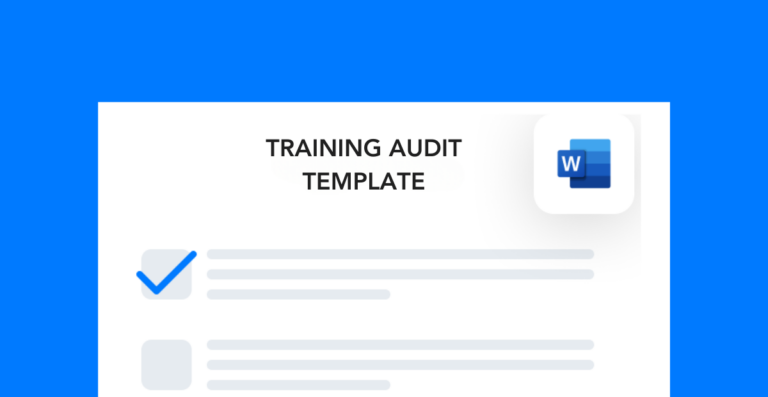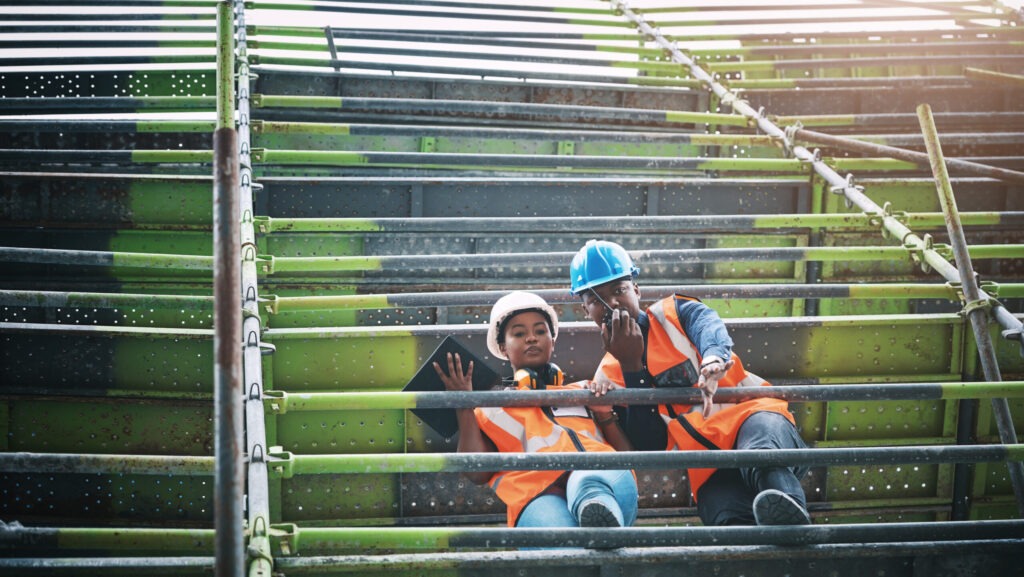Despite making up only a fraction the workforce, HR and safety are essential to its success. These two departments oversee much of a company’s regulatory compliance requirements while also protecting and engaging workers. So, understanding the connection between HR and safety is critical if you want to run an efficient and successful operation.
Free template!
Download this free training audit template to review your training program and brainstorm ways to improve it.
Roles of safety and HR
EHS and HR are separate disciplines, tasked with overseeing everything from policy enforcement to compensation management and environmental compliance. Here are some of the main roles of each department:
Human resources: Oversee workforce documentation, enforce site policies, protect the company from litigation, handle turnover, hire and fire employees, manage compensation
Environmental, health, and safety: Prevent safety incidents, manage environmental compliance, coordinate worker’s compensation, oversee regulatory compliance, enforce safety policies
HR and safety are oftentimes understaffed, making it even more important for them to support each other’s roles within the company. Luckily, there’s often a good amount of overlap between both EHS and HR functions.
Similarities between HR and safety
Although they have distinct functions within the company, there are quite a few similarities between safety and HR. And that makes sense because both departments deal with personnel compliance management.
Here are some of the functions that your HR team and EHS team have in common:
- Training and onboarding
- Incident investigation (witness interviews, information gathering, etc.)
- Enforcement of site policies
- Protecting and supporting the workforce
- Coordinating worker’s compensation claims and related time off
You’ll notice that these responsibilities typically fall into two categories: regulatory compliance and internal compliance. If HR and safety don’t work together, it’s very difficult to uphold workplace policies.
Tips for collaborating together
If you work in safety, then you need HR’s help to hold workers accountable to safety policies. And if you work in HR, then you need the safety team’s help to keep everyone up to date on their training requirements.
Collaborating on investigations, training, etc., is essential to the company’s performance. Here are some tips for working with each other effectively, regardless of what you’re working on.
Cross-train for certain responsibilities
If you train HR staff in how to do certain safety functions and vice versa, you’ll be much more efficient as a team. This isn’t to say that every safety person should be an HR person, too. It just means that there are some skills that apply to both departments so everyone should have them. Here are some examples of cross-training topics:
- How to fill out an incident report
- How to interview witnesses
- How to conduct an incident investigation
- How to verify training compliance
- How to effectively train and onboard employees
- How to update and track training compliance
- How to upload and update employee documentation
- How to coach workers
All these skills are relevant to both departments, even though they might be applied differently. For example, while safety investigates things like injuries and near misses, HR investigates things like time theft and harassment. Either way, the skills needed to do the work are the same. Build stronger departments by ensuring both teams know how to support each other.
Use LMS software for all training
Since the safety and HR departments are responsible for onboarding and training, it makes sense to coordinate everything in the same way. Using a learning management system (LMS) allows you to keep all training records in one place. This makes it easier to assign, schedule, coordinate, and document training.
Frontline LMS is a great option for companies in heavy industries like manufacturing, oil and gas, or chemical production. And that’s because it has more than 400 safety training courses pre-loaded for you to use. But if you want to make and upload your own training materials, you can do that too.
What’s most important is that HR and safety coordinate training together so it’s as efficient as possible. Whether you use software or not, make it a standard practice to log all training under one system so you don’t have to go to multiple locations for the information you need.
Frontline LMS for training compliance
Use Frontline LMS to quickly access detailed training reports and find any gaps in compliance.





